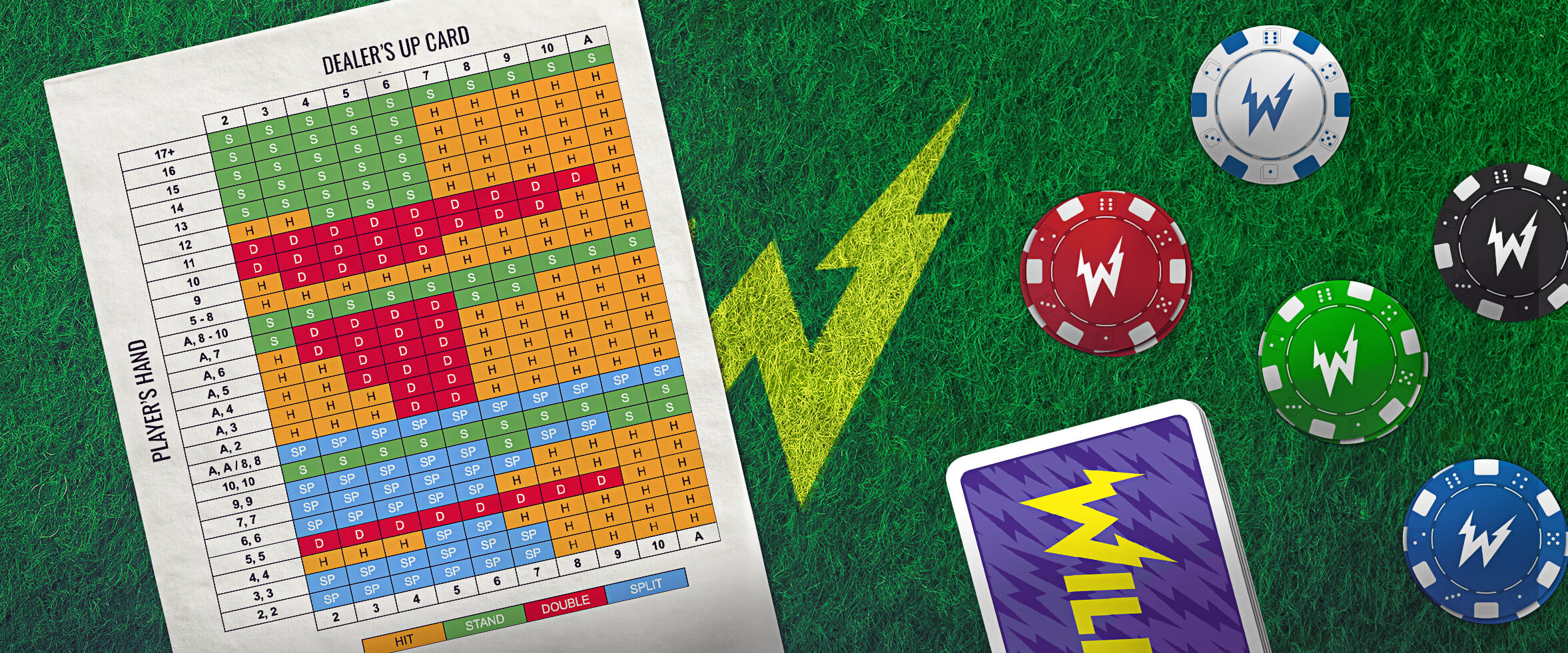The high Return-to-Player (RTP) percentage in Blackjack means that players will get back over 99c for every dollar they put into this game over time.
While the theoretical RTP is high for a casino game, people often make poor decisions that lower their effective rate of return.
When You Should Hit
We'll assume you have at least a basic understanding of the rules of Blackjack. The first thing to consider is whether or not your cards give you a combined value worth 11 or lower. If they do, then it's probably worth taking one more card in an attempt to get closer to 21.
Once the player's hand is valued at 12 or greater, the dealer's showing card needs to be considered. If the dealer is showing an 8, 9, 10, face card, or an Ace, it's not a bad idea to take a card if you have a 16 or less. The chances of the dealer beating your 16 or less are pretty high, so taking a card, even though there is a decent chance the player will bust, is generally the smarter play.
If you hold a 12 and the dealer say, a 3, then optimal play is to take one more card. The chances of the dealer landing two face-cards are less than the player going bust with their 12.
If the dealer is showing a potential bust hand with a 5, 6, or 7 revealed, the player may want to consider doubling their 8, 9, 10, or 11 hands. The disadvantage with doubling is that the player is restricted to one drawcard. Say, for example, the dealer is showing an 8 and the player a 9. In this case, doubling is a risky proposition. Anything under 10 or a face card is going to put the player at a disadvantage. If, for example, the player draws a 2 in this position, they are likely dead in the water absent an unlucky draw for the dealer.
Conversely, doubling your 9 is a profitable move if the dealer is showing a 6. Even if you end up on 11 after drawing another 2, it's likely the dealer with bust with their 6.
When You Should Stand
The dealer holding a bust card is the primary indicator on whether or not a player should stand on a hand in blackjack. The 5, 6, and 7 cards are the most likely to produce a bust for the dealer.
Another instance where a stand is the smart move would be when the dealer is holding a 7 or higher and the player has a pair of face cards. Some players are tempted to split too often. In a case like this, take the 20 and the almost guaranteed tie or win. Now, if the dealer is showing a 4, 5, or 6, then splitting those face cards is a good move. Chances are extremely high that at least one of those split hands is going to be a winner.
'Lucky' Hands are a Fallacy
The truth is, some hands are good, and some are bad. Don't be fooled in thinking that some cards bring greater luck than others, as this is a surefire way to set your money alight.
Just because a player wins big one evening with a particular set of cards or even several times with this so-called "lucky hand", it doesn't change the percentages. Over time, the math will win. The best blackjack players are those who remain disciplined about following the percentages. Check out this handy cheat sheet that tells you how to play by the percentages.

